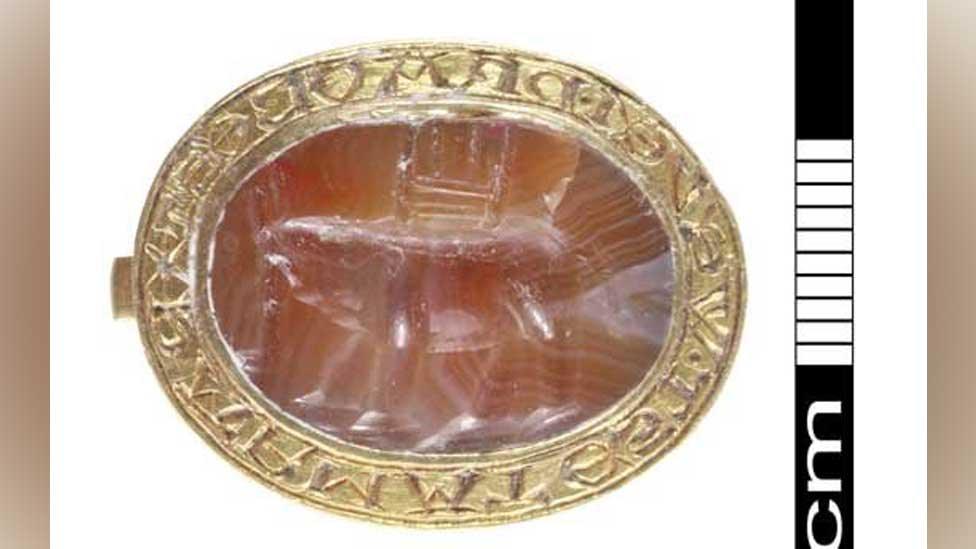'Elephant and castle' gold seal bought by museum
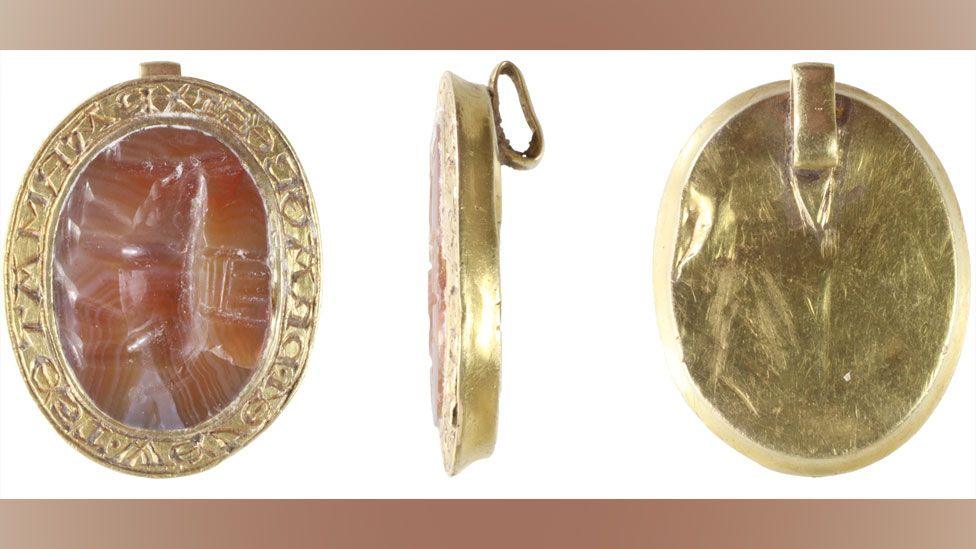
The seal matrix dates to between 1250 and 1350, a period covered by the reigns of Henry III, Edward I, Edward II and Edward III
- Published
An unusual medieval gold seal with a gemstone engraved with an elephant carrying a castle on its back has been added to a museum's collection.
Discovered by a metal detectorist near King's Lynn, Norfolk, and declared treasure in 2021, it was only the third of its kind recorded by the British Museum.
The find has now been acquired by Norwich Castle Museum & Art Gallery and more information about it has been revealed thanks to a medieval French expert who was able to translate its inscription, initially believed to be in Latin.
County finds liaison officer Helen Geake said: "We couldn't make head nor tale of it, but Malcom Jones suggested it was a rhyming couplet in French."
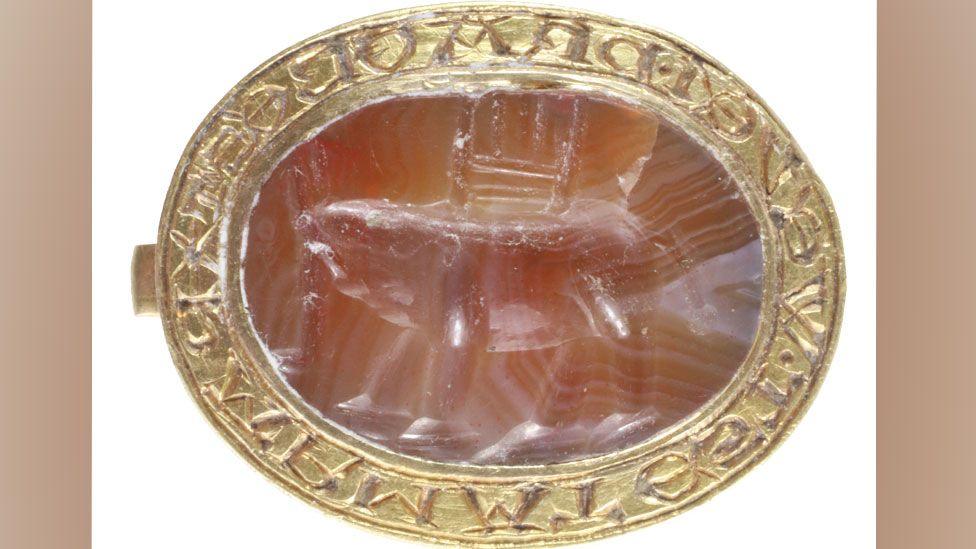
It measures 28mm by 22mm (1.1in x 0.8in) and its gemstone was probably carnelian
The inscription around its circumference reads PARMAT EST ‧ WEVEI ‧ DRA OBEST.
Mr Jones said its most likely reading was 'By my head, you have dragon or beast'.
"He explained 'by my head' was a relatively common exclamation, meaning something like 'upon my soul'," said Dr Geake.
"The inscription could be linked to the engraving because in medieval bestiaries, the dragon is described as the elephant's only foe."
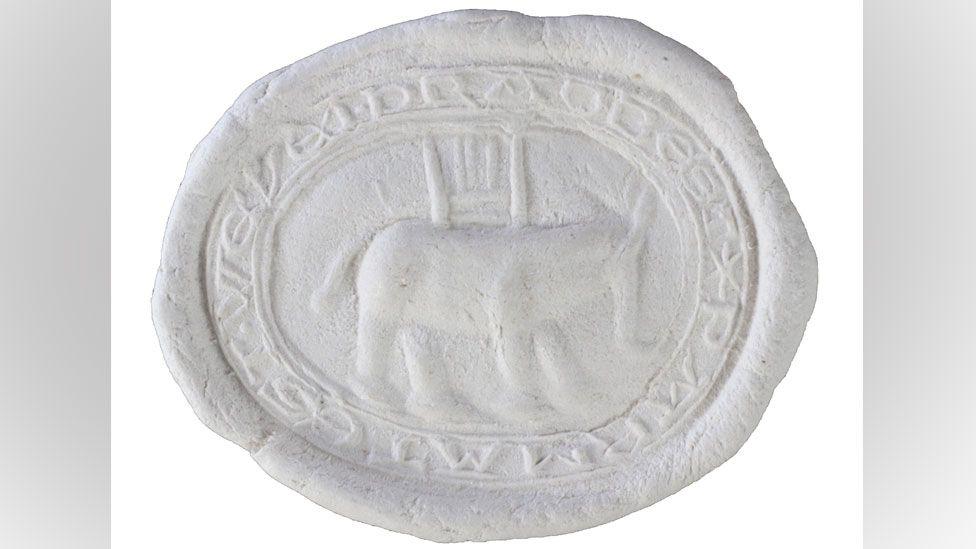
Once pressed into wax, a clear impression was created of the elephant and the inscription surrounding it
Bestiaries were beautifully illustrated manuscripts, like medieval encyclopedias, and are believed to have inspired JK Rowling's Fantastic Beasts & Where to Find Them.
However, each creature listed was described in terms of its place within the Christian worldview, rather than as a purely scientific phenomenon, external.
Dr Geake said: "We often forget French is the language of court and chivalry in medieval England and I've always liked rhyming couplets, it remind me of pantos.
"It's also a reminder of how rich medieval culture is and how much is lost - this is a hint about what we don't know."

The law says all finders of gold and silver objects or coins more than 300 years old must be reported to a county finds liaison officer, which in Norfolk is Helen Geake
Few people in medieval England would have seen a live elephant, although there was one in the royal menagerie at the Tower of London between 1255 and 1257 - a gift from King Louis IX of France to King Henry III.
The seal matrix would have been used by its owner to make an impression on wax to authenticate or keep closed letters or documents.
The design - showing an elephant with a war-tower or howdah on its back - later became known as the elephant and castle of heraldic iconography.
Get in touch
Do you have a story suggestion for Norfolk?
Follow Norfolk news on BBC Sounds, Facebook, external, Instagram, external and X, external.
Related topics
- Published29 December 2024
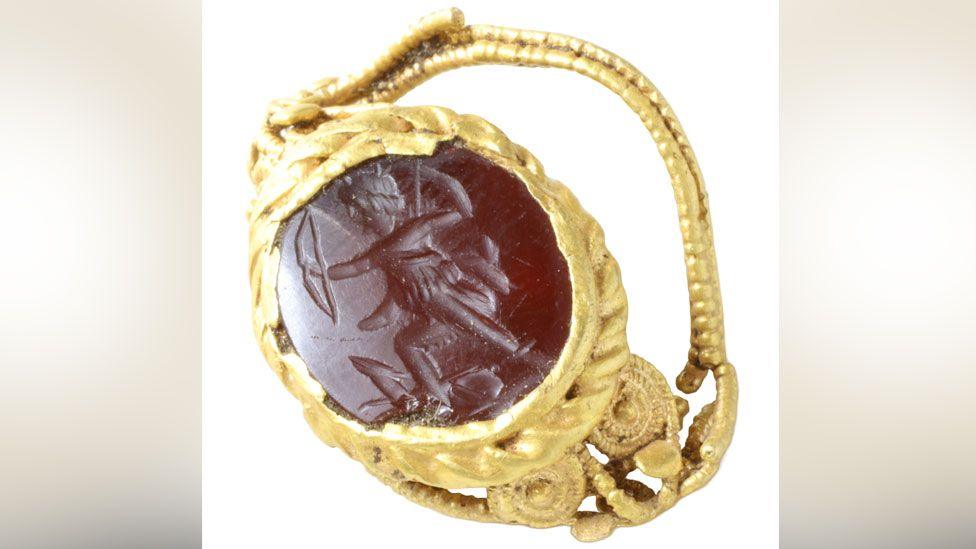
- Published11 February 2024
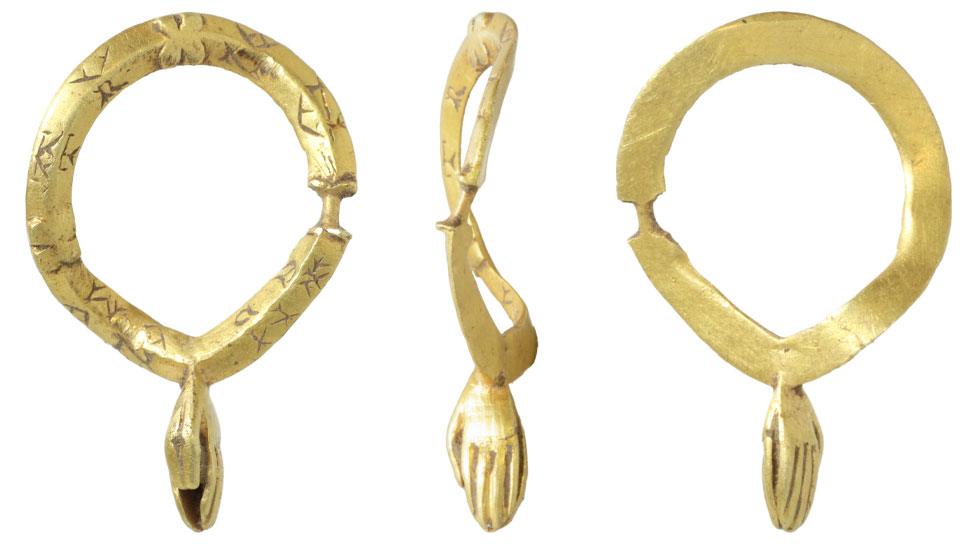
- Published4 April 2021
